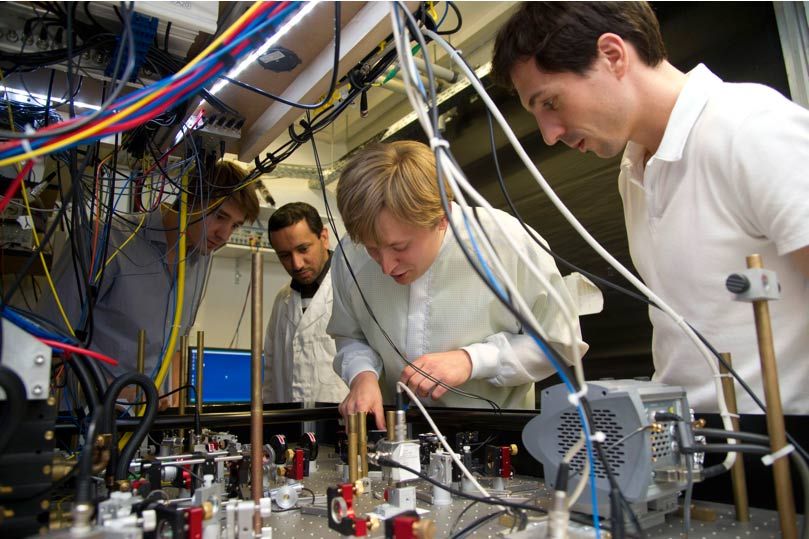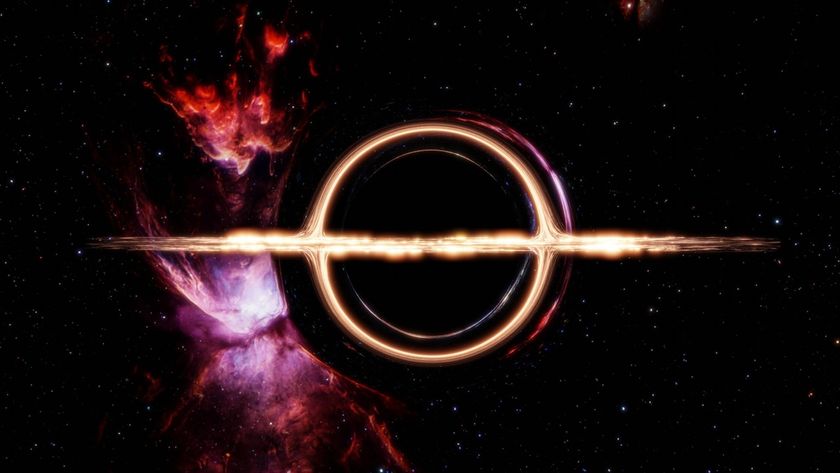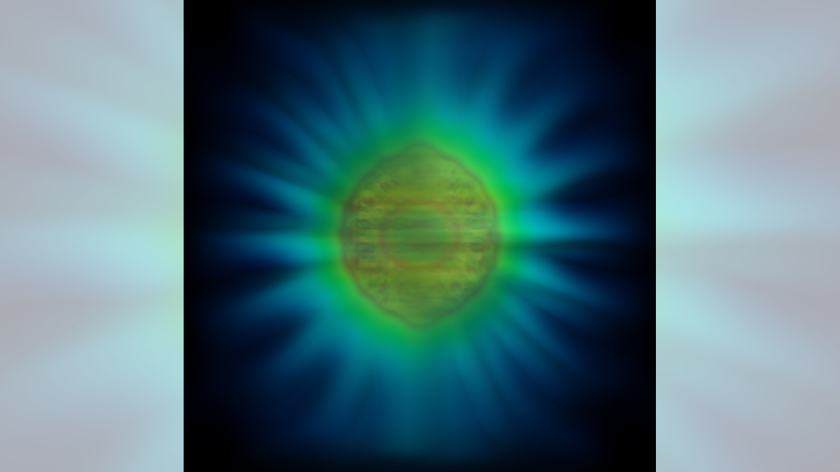Franken-Physics: Atoms Split in Two & Put Back Together

Physicists have just upped their ante: Not only have they split atoms but, even trickier, they've put them back together.
Their secret? Quantum physics. A team of scientists was able to "split" an atom into its two possible spin states, up and down, and measure the difference between them even after the atom resumed the properties of a single state.
The research wasn't just playtime for quantum physicists: It could be a steppingstone toward the development of a quantum computer, a way to simulate quantum systems (as plant photosynthesis and other natural processes appear to be) that would help solve complex problems far more efficiently than present-day computers can.
The team at the University of Bonn in Germany did a variation on the famous double-slit experiment, which shows how ostensibly solid particles (atoms, electrons and the like) can behave like waves. The researchers found that they could send an atom to two places at once, separated by 10 micrometers (a hundredth of a millimeter — a huge distance for an atom). [Graphic: Nature's Tiniest Particles Explained]
Double slits
In the classic double-slit experiment, atoms are fired at a wall with two breaks in it, and they pass through to the other side, where they hit a detector, creating the kind of interference pattern expected from a wave. If atoms behaved the way we intuitively expect particles to behave, they should emerge out of one slit or the other, with no interference pattern. As more and more atoms passed through the slits, there should be a cluster of them around the two points behind the slits.
Since this is quantum mechanics, that's not what happens.
Sign up for the Live Science daily newsletter now
Get the world’s most fascinating discoveries delivered straight to your inbox.
Instead, there's an interference pattern that shows peaks and valleys. The atoms behave like light waves. The atom is in two places at once.
But if you try to see the atom in one or both places, it "collapses" into one, as the act of observing it determines its fate; hence, the interference pattern disappears.
Atomic twins
In the experiment at Bonn, the researchers fired two lasers in sequence at a single atom of cesium, moving it to the left or right. The lasers allowed the researchers to control the movement of the atom precisely, in a way that the old-fashioned double slit would not. (Before firing the lasers, the researchers cooled the atom to within a hair of absolute zero, eliminating most of its own movement.)
Each atom has a spin state, which is either up or down. By moving the atom in two directions at once (using both lasers), the scientists were able to make it "split." Unlike splitting an atom into its constituent subatomic particles, as happens in radioactive decay, in this case the atom was essentially splitting into a set of twins. It was in two states at once — up and down. [Twisted Physics: 7 Mind-Blowing Findings]
It's not possible to see both states at once. If one were to try to measure the state of the atom, it would "collapse" into a single state. But when one looks at the atom at the end of its journey, the combination of the two states can be measured.
Since atoms — and other quantum particles — behave like waves, they have phases, just as waves do. (The phase is the particular point in the cycle of a wave, and is measured by degrees. Two waves that are the same shape and 180 degrees out of phase with each other will cancel each other out as one's trough aligns with the other's crest. Waves in phase with each other will add up as one crest aligns with the other crest).
The laser distorts the wave phase when it moves the atom to the left or right. So there is now a difference in the phases of the two spin states when the atom arrives at its destination and is no longer "split." Even though it's not possible to see both states at once, when one looks at the atom at the end of its journey, the combination of the two states can be measured.
Controlling qubits
In addition to measuring that phase difference, the researchers also saw "delocalization" — the double path through space the atom takes — at a greater distance than ever before, on the scale of micrometers as opposed to nanometers.
It's this dual nature, called a superposed state, of atoms that would make quantum computers so powerful. The bits (known as "qubits") could be in more than one state at once, allowing for calculations that would take ordinary computers an extremely long time. It also means that quantum computers could be useful for simulating other quantum systems.
Physicist Andrea Alberti, one of the paper's co-authors, said that's why in the future the researchers want to experiment with more atoms. "With two atoms, you have four different trajectories, but only one is where they are 'meeting,'" he said. By controlling the phase of more atoms, you have more bits. One could think of it as two bits in all four possible states at once.
It isn't clear, he said, what minimum number of bits would be needed to make a working quantum computer. But the fact that scientists can control the phase states of a single atom means it should be possible to do the same thing with more than one.
The point, Alberti said, is to build a way of simulating quantum systems. Right now that is difficult because the calculations are so complex. But a quantum computing system lends itself to such calculations better than a classical computer does.












